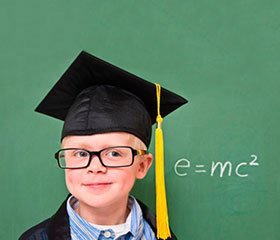Журнал «Здоровье ребенка» 2 (61) 2015
Вернуться к номеру
Indicators of development of school age children, Living in conditions of iodine deficiency.
Авторы: Bukovinian State Medical University, Chernivtsi, Ukraine
Рубрики: Педиатрия/Неонатология
Разделы: Клинические исследования
Версия для печати
Introduction. Deficiency of thyroid hormone any degree has negative impact on the child's body and is a high-risk factor for growth and development in children.
The aim of the study. Evaluate indicators of development of school-age children, living in conditions of iodine deficiency.
Material and methods. The study was conducted according to the methodology recommended by WHO/ICCIDD (2001). The basic anthropometric parameters (length and weight), the estimation of intellectual development in 819 children 7-16 years, living conditions mild iodine deficiency (472 persons) and medium (347 persons) severity. Anthropometric measurements were carried out by standard methods. Formation of intellectual function was determined using the piece test of R. Cattell. Defining indicators of mental activity of school children was carried out by proofreading test in conjunction with a test of speed reading. All children performed daily determination of urinary iodine (reaction Sandell-Kolhoff), palpation of the thyroid gland, determine its size and structure using ultrasound investigation.
Results. According to the study, none of the child assessed group did not use seafood rich in iodine, iodized salt used only 1 family of 50. The analysis of the main anthropometric characteristics of children 7 to 16 years showed that there is a gradual increase in the uneven length, body weight and contours chest. The biggest annual increase in girls observed along the length of the body in 11-12 years, body mass – 12-13 years, according to the length of the body boys – 13-14 years, body mass – 10-11 and 14-15 years and chest circumference – 13-14 years. Average growth in body length 7-12 years in girls and boys had no difference, and at age 13-16 years was higher in boys (p<0,05). The average increase in body weight at the age of 7-12 and 13-16 years was higher in girls (p<0,05). The total increase in circumference of the chest in the 7-12 year olds probable sexual difference had, while aged 13-16 years it was higher in boys (p<0,05). The boys from 7 to 16 years total increase in body length, body weight and chest circumference greater than in girls. Among children living in areas of iodine deficiency moderate severity 38,5% have disharmonious physical development. Equally often had as children with excess body weight, and body mass deficient. The percentage of children with disharmonious physical development, living in the area of mild iodine deficiency was lower and amounted to 30,7%.
Most of the children surveyed have an average degree of intellectual development. The level of intellectual formation varied downward to increase as the degree of iodine deficiency. Leading disabilities across a group of children registered with impaired memory and fine motor skills (66,7%).
Speed reading in children living in conditions of mild iodine deficiency increases with age: 32,13 word for 1 minute in boys (the difference between the averages of prebubertal and pubertal age, p<0,01) and girls at 31,18 (p<0.05). Children, who live in conditions of medium iodine deficiency, with a gradual increase in reading speed probable difference between prepuberty and puberty were found.
As the children surveyed were standardized major factors influence the development, it can be assumed that the detected changes triggered mainly iodine deficiency in the environment.
Conclusions. 1. The diet of children characterized by a deficiency of foods rich in iodine. Iodized salt uses only 1 of 50 children. 2. Children from family, living in conditions of medium iodine deficiency, have in all age subgroups with lower rates of physical development. A third of children living in areas of iodine deficiency have disharmonious physical development. 3. 13,8% of children from the area of iodine deficiency are changing for the majority of the studied cognitive functions. Leading disabilities across a group of children registered memory impairment and fine motor skills. The level of intellectual formation, performance and accuracy of work vary downward as far as increase the degree of iodine deficiency.

